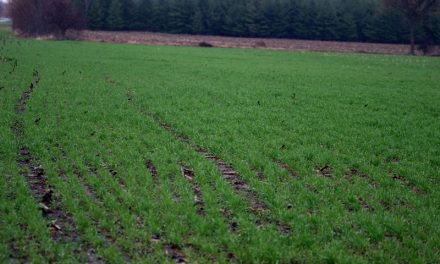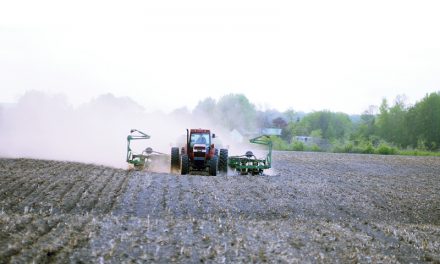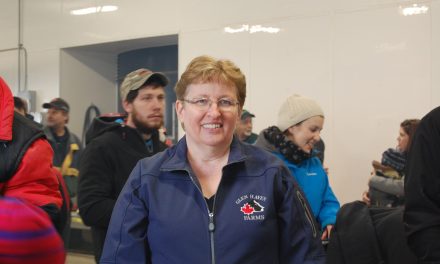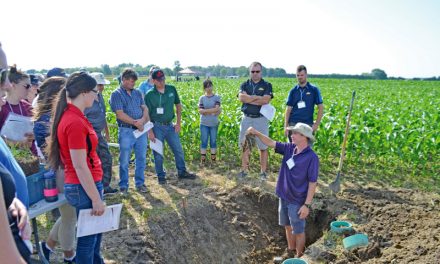by Scott Banks
Special to AgriNews
WINCHESTER – Overnight rainfall June 22 ranged from 1 to 10 ml in the region. From May 1, the area has accumulated about 825 Crop Heat Units (CHU), which is only about 25 CHU behind normal. Heat over the mid-June week has brought us closer to normal. Long range forecast is for cooler temperatures, so less CHU accumulation in the coming weeks. Rainfall is still almost double the normal rainfall since May 1.
Forages
About 80 per cent of the early first cut alfalfa has been harvested. Good yields and quality have been reported. Some growers reporting their first cut this year is the same amount they got off in all cuts combined last year. The odd sign going up with hay for sale is a good indication that growers are having good yields.
Corn
In the Napanee, not as much corn was planted as intended. These acres have been switched to soybeans. Some still have soybeans yet to be planted. Nitrogen soil tests are coming back with lower nitrate levels for this point in the year as compared to the same time last year. Depending on this year’s yield potential and current nitrogen rates, growers may need to increase by an additional 30 pounds of nitrogen per acre. About 25 per cent of the side-dress nitrogen is done. Herbicides, especially pre-emerge sprays are working well. Still the odd field that was left for a post-emerge herbicide program and due to wet soil conditions, has not been sprayed yet. Fields planted wet with seed slot open are a danger for phenoxy type herbicides if that herbicide gets into that seed slot. This year may be a good year to be as safe as possible with recommendations in terms of leaf stage and when to apply. Very little reports of cutworm, though the odd one has been found – some in a few fields near Lanark, but not significant enough for replant.
Soybeans
Still some to be planted, but mostly done. Soybeans planted on the May 28 weekend are struggling as soil conditions were not in good shape. Some soybeans planted from May 16 to 20, needed to be replanted due to planting to heavy rains. Lots of inconsistency, soil structure playing a role. Tillage also showing a big difference. ‘Less is more’ this year; those that no-tilled or did very little tillage have far better stands. Agricorp had 100 damage reports as of this past Friday; some claimed as unseeded acres and some claims for replanting due to crusting, wet soil, etc. Many growers were not looking for the poor emergence and so damage reports came in late for reseeding. Overall, less than five per cent of the soybean acres had to be replanted, mainly in low, wet areas of the field. Final soybeans stands population are about 124,000 plants per acre. Dicamba drift has been reported in some U.S. states resulting in talk about a ban of applying dicamba products at certain times of the year. This is a reminder for us to be careful with dicamba product applications. Some growers are deferring to other herbicide options.
Winter wheat
Most of the fusarium head blight fungicides were applied at the correct stage of the wheat just before the rain started on the weekend of June 17. Cereal leaf beetles/larvae showing up.
Spring Cereals
April-planted spring wheat will likely be heading in about seven to 10 days. Foliar fungicides being applied the week of June 19. Aphids are being found in spring wheat, so there is a potential for barley yellow dwarf virus to occur. A few fields have been sprayed. Aphids pressure in some fields. The aphid threshold prior to the heading stage is 12 to 15 cereal aphids per stem and up to 50 aphids per head once headed. At this point, no army worm pressure has been found in the area. Only pockets has been reported south of Montreal area.
Edible beans
Only a small number of intended edible bean acres in the Winchester area have been planted. Some still to be planted in Napanee area.
Market update
The commodity markets seem to be trading according to weather and crop conditions. December corn has dropped 15 cents in the past week between a combination of fund shorts being squared away and timely rains over some of the Corn Belt. Despite the drop in futures our local basis values are holding fairly strong. The U.S. crop is rated at 67 per cent good to excellent compared to 75 per cent last year. November soybeans have lost some of their momentum and our high Canadian dollar at $0.7541 to the U.S. dollar (CAD/USD) has eaten away at our basis values. Both Kansas and Chicago wheat markets are pushing new highs providing some excellent wheat prices to take advantage of. We will look towards the USDA June 30 report to provide some insight on further price direction.
Agricorp
Soybeans planting deadline is June 30. After June 30, growers can seed a cover crop.
Winchester Research Station
Plot trials are all planted and being sprayed. Drainage has been working well; everything has emerged.
A few tours are booked through the summer:
Dundas Soil & Crop Improvement Association – Summer Tour on August 2. If others wish a tour of the Winchester Research Station, contact Holly Byker athbyker@uoguelph.ca.
Upcoming Field Days:
Southwest Crop Diagnostic Days – July 5-6 (Ridgetown College) – diagnosticdays.ca
FarmSmart Expo – July 13 (Elora Research Station) – farmsmartconference.com
Eastern Ontario Crop Diagnostic Day – July 19 (Winchester Research Station) –eocdd.eastontcropconference.ca
Canola Crop Tour – July 14 – 10 a.m. to 3 p.m.; (Barclay Dick & Sons Farm Supply, 4139 AB Highway 60, Douglas) – https://www.ontariocanolagrowers.ca/
Soil Management Day – August 10 – Vernon, Ontario.
NEW – Agronomy Guide for Field Crops – Publication 811 – How to Order A pdf version is available.http://www.omafra.gov.on.ca/english/crops/pub811/811pdforder.htm












